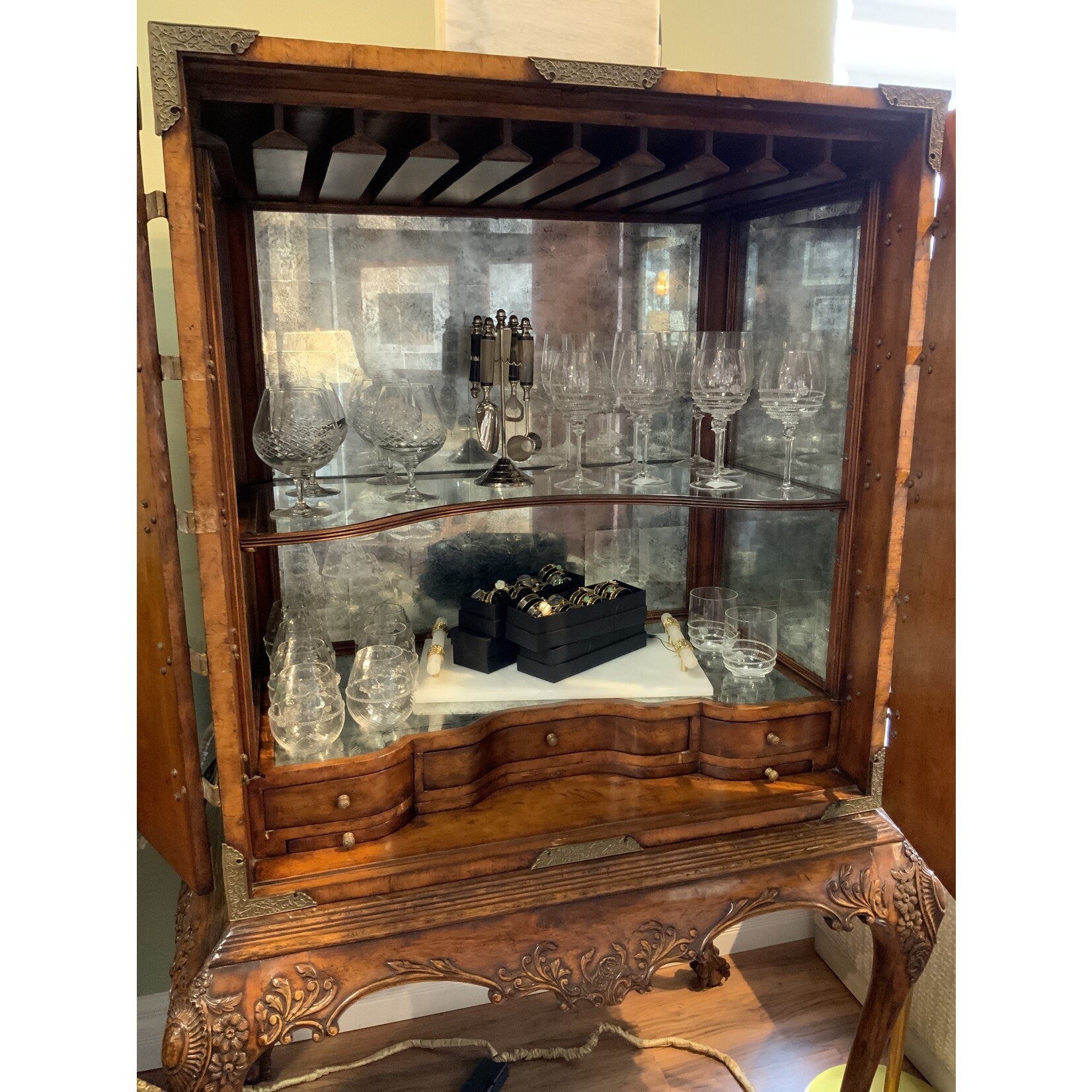The History and Significance of Queen Anne Glass Cabinets

The Queen Anne style, a prominent artistic and design movement in the early 18th century, found its expression in furniture, architecture, and decorative arts. It marked a shift from the elaborate and ornate Baroque style to a more refined and elegant aesthetic, emphasizing simplicity, practicality, and symmetry. Queen Anne glass cabinets, a significant component of this style, evolved as a reflection of the changing tastes and societal values of the time.
The Origins of Queen Anne Furniture
Queen Anne furniture, named after Queen Anne of Great Britain who reigned from 1702 to 1714, emerged during the early 18th century, coinciding with the rise of the English Rococo style. This period witnessed a growing appreciation for practicality and comfort, and Queen Anne furniture reflected these values through its elegant yet functional designs. The Queen Anne style was characterized by its graceful curves, cabriole legs, and use of walnut wood, which was prized for its rich color and durability.
The Evolution of Glass Cabinet Design
Glass cabinets, initially known as “china cabinets,” evolved significantly throughout the 18th century. Early designs were often simple and utilitarian, with plain glass doors and shelves. As the century progressed, glass cabinets became more elaborate, featuring intricate carvings, veneers, and ornate hardware. The introduction of plate glass in the mid-18th century allowed for larger and more transparent panels, enhancing the display of valuable porcelain and glassware.
The Cultural Significance of Queen Anne Glass Cabinets
Queen Anne glass cabinets served a practical purpose, providing a dedicated space for storing and displaying valuable china, glassware, and other collectibles. However, they also held significant cultural importance, symbolizing wealth, status, and refined taste. The cabinets’ intricate designs and the quality of their materials were a testament to the owner’s affluence and social standing.
“The presence of a Queen Anne glass cabinet in a home was a clear indication of the owner’s prosperity and cultural sophistication.”
During the 18th century, the growing middle class aspired to emulate the lifestyles of the aristocracy. Queen Anne glass cabinets, along with other elements of the Queen Anne style, became highly sought after as symbols of social advancement.
The Art of Restoring and Preserving Queen Anne Glass Cabinets

Restoring and preserving Queen Anne glass cabinets requires a delicate balance of historical accuracy and modern preservation techniques. The goal is to maintain the cabinet’s original character while ensuring its longevity for future generations.
Cleaning and Maintenance
Regular cleaning is crucial for preserving the cabinet’s finish and preventing dust buildup.
- Use a soft, dry cloth or a microfiber cloth to dust the cabinet regularly.
- For more thorough cleaning, use a mild soap solution and a soft cloth. Avoid harsh chemicals or abrasive cleaners that can damage the finish.
- Pay special attention to the glass panes, using a glass cleaner specifically designed for antiques.
Repairing Damages, Queen anne glass cabinet
Queen Anne glass cabinets, due to their age, may exhibit signs of wear and tear.
- Minor scratches or dents can often be repaired using a wood filler or a specialized furniture repair kit.
- For more significant damage, consult a professional furniture restorer. They can assess the extent of the damage and recommend the most appropriate repair methods.
Refinishing Techniques
Refinishing a Queen Anne glass cabinet requires careful consideration to preserve its historical integrity.
- Stripping the old finish is often necessary before applying a new one. Use a chemical stripper designed for antique furniture and follow the manufacturer’s instructions carefully.
- After stripping, sand the wood to remove any remaining residue and create a smooth surface for the new finish.
- Choose a finish that complements the cabinet’s original style and materials. Traditional finishes include shellac, wax, and oil-based varnishes.
Importance of Using Appropriate Materials
Using the right materials is crucial for preserving the cabinet’s historical integrity.
- Avoid using modern materials that may be incompatible with the cabinet’s original construction.
- For example, using a modern adhesive on a traditional wood joint could damage the wood over time.
- Always consult a professional furniture restorer for advice on appropriate materials and techniques.
Tips for Collectors and Enthusiasts
Caring for and displaying a Queen Anne glass cabinet requires attention to detail.
- Avoid placing the cabinet in direct sunlight or near heat sources, as this can damage the finish.
- Use a humidifier during dry seasons to prevent the wood from cracking.
- Display the cabinet in a well-ventilated area to prevent mold and mildew growth.
